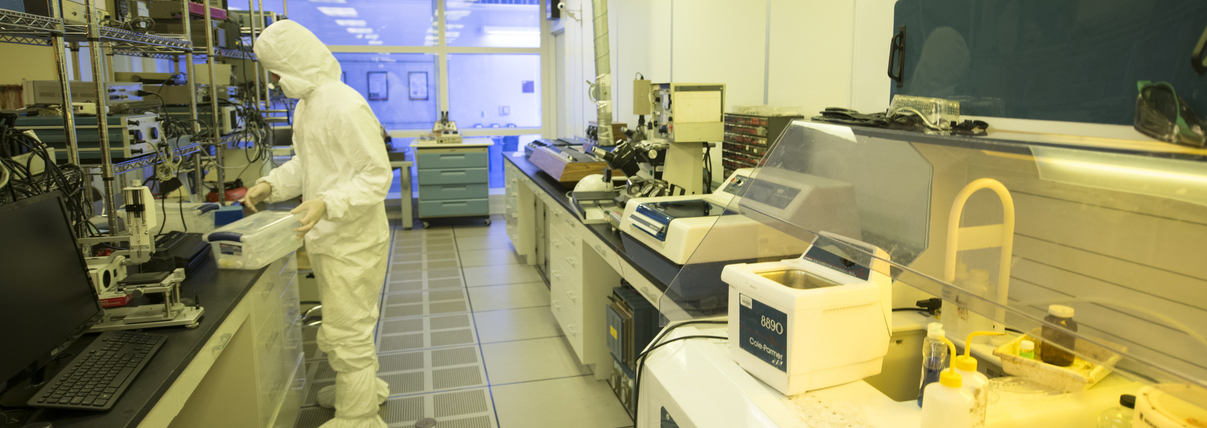Entry to the MRDL requires clean room protocols. Air flow is from ceiling to floor and is laminar. A clean room environment is maintained by removing airborne particulate larger than 0.5 microns (500 nanometers) in size.
The room is maintained at a constant positive air pressure to minimize outside air contamination. Temperature and humidity are controlled.
Yellow lighting is used for safe processing of light-sensitive materials and chemicals. An ultra-pure deionized water system is used for cleaning.
Lab safety systems and policies are monitored to ensure a safe environment. Please review our lab safety guidelines before using the lab.
Work areas:
- 2,500 square feet of Class 100 (ISO Class 5) work area
- 1,750 square feet of Class 1000 (ISO Class 6) work area
- 950 square feet of Class 10000 (ISO Class 7) work area
Class 100 is defined as fewer than 100 airborne particles larger than 0.5 microns per cubic foot of air. Normal particle count in Class 100 areas is less than 10. In outside air, particle counts can range from 500,000 to several million.
